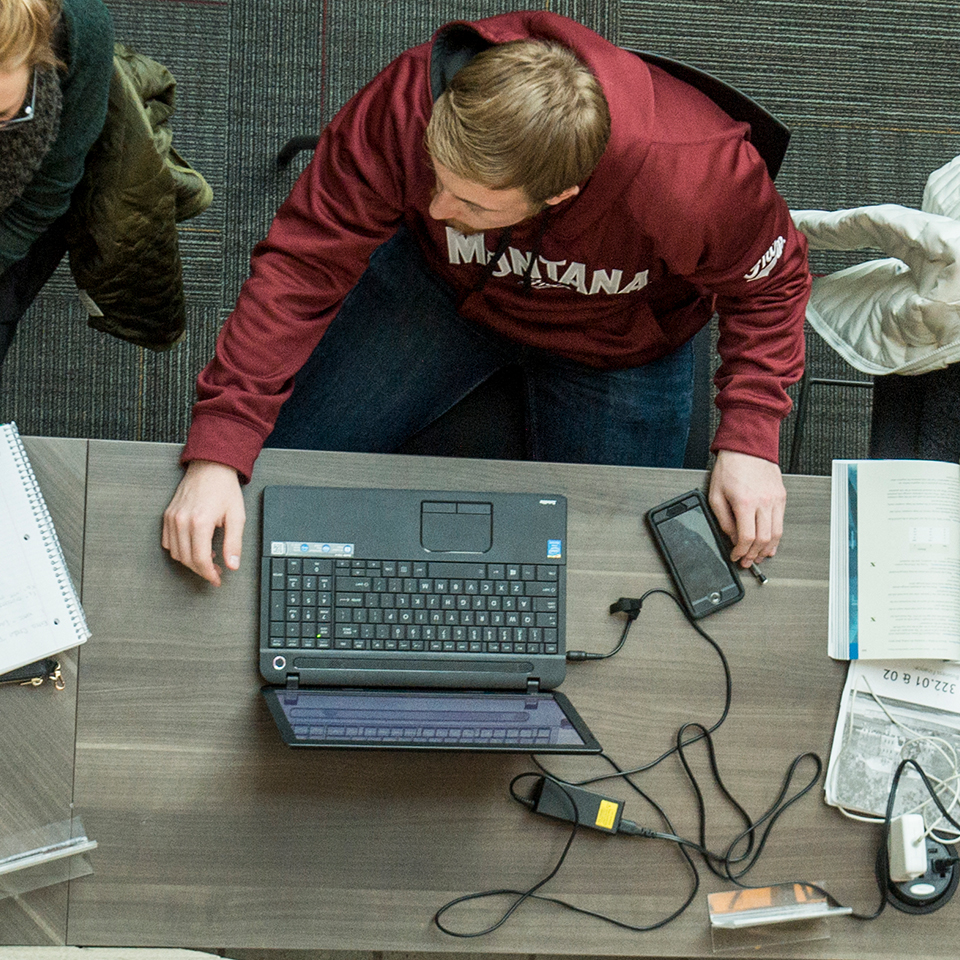Research Projects
Doug Brinkerhoff, Associate Professor
Glaciology
My work focuses on improving our ability to predict changes in earth's glaciers using computer models, and in particular determining just how certain our predictions are. This usually means using computational statistics to calibrate glacier models against real world observations taken in the field or by satellites and then projecting those models into the future. Simulating large fluid mechanical systems like glaciers can be very computationally expensive and our methods for quantifying uncertainty can require running them many times, so a large part of my work involves using machine learning to approximate glacier models so that we can run them much faster. I also sometimes fly out to glaciers in Antarctica, Greenland, and Alaska to measure things.
Jesse Johnson, Professor
How computers can be used to ‘do physics’
I am currently engaged in several research projects and it may be difficult to see what they have in common. All can be traced to my interest in how computers can be used to ‘do physics’, or satisfy the constraints encountered when considering physical systems. I discuss some of the grounding principles for my research in this podcast. My background in both computing and physics helps me to carry out the projects. Twenty years into a career I still find bringing theory into agreement with observations utterly satisfying. Learn more about my major research projects.
Jordan Malof, Assistant Professor
Advanced machine learning, statistics, computer vision
My research involves the development of advanced machine learning (especially deep learning), statistics, and computer vision techniques to solve cutting edge problems in a variety application areas. In recent years my students and I have developed competition-winning computer vision methods for the recognition of buildings, solar arrays, and other objects in satellite imagery (e.g., Ren et al., 2023, Huang et al., 2021), often to support climate and sustainability efforts. Recently we have developed novel machine learning methods to accelerate the design of advanced materials, along with colleagues at Duke University (e.g., Ren et al., 2020, Spell et al., 2023). More broadly we are interested in using machine learning to model physical systems and uncover new relationships (e.g., "discover physics"). For a full list of publications and research interests please see my google scholar page.
Yolanda Reimer, Professor
Broadening CS in Montana K12 Schools
The focus of this project is to broaden the computer science curriculum available in Montana's public K12 schools so that more students are exposed to opportunities within CS. We have formed a statewide collaboration to increase the number of teachers qualified to teach computer science in the state and to engage more students in various topics and activities within CS. To achieve these goals we:
- Prepare K12 teachers to teach CS topics by offering multiple professional development opportunities.
- Provide local and online resources for ongoing professional development.
- Maintain a community of CS K12 teachers around the state.
- Focus on engaging underrepresented groups in CS.
- Use educational research foundations to build, assess, and inform our ongoing activities.
Alden Wright, Emeritus Professor
EvoTech
Humans are a technological species. Over the last 3 million years our evolution has been profoundly shaped by the things we make and use, which in turn have been impacted by the cultural abilities that humans possess. While we can no longer claim that either technology or culture is unique to humans, we do know that human abilities in these two areas are more complex than those of other species. Our cultural capacity allows us to store and transmit the knowledge and skills necessary to refine and innovate technologies, and in doing so to build on the advances made by the countless generations that have gone before us.
Researchers now see that human biology and culture are complexly connected, and that we can often understand the evolution of both culture and technology as processes that have analogies in biological evolution. This enables researchers to use theory and methods drawn from the biological sciences in order to understand cultural and technological change, and provides a powerful interdisciplinary approach to the study of human evolution.
